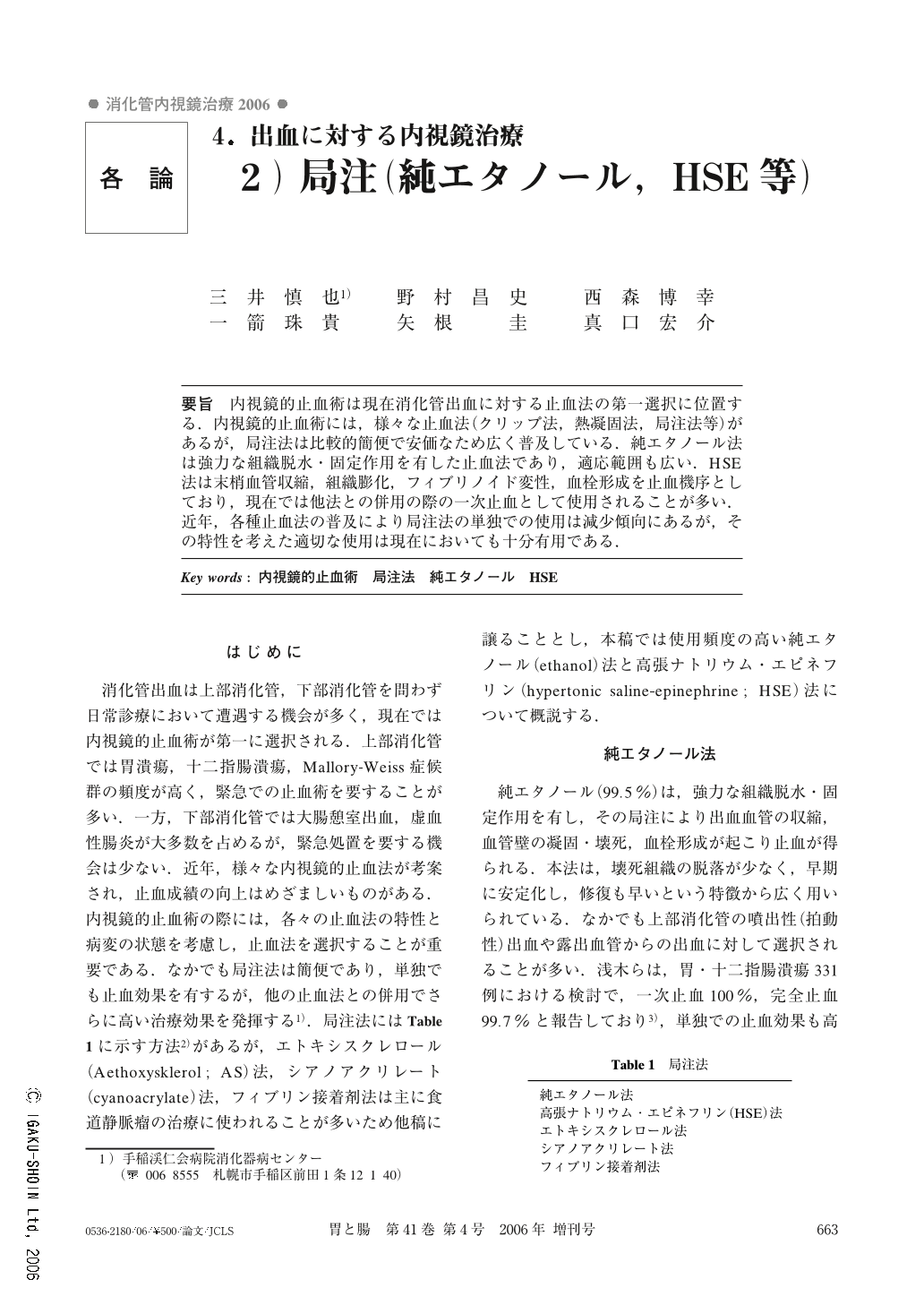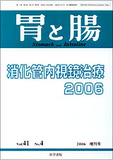Japanese
English
- 有料閲覧
- Abstract 文献概要
- 1ページ目 Look Inside
- 参考文献 Reference
要旨 内視鏡的止血術は現在消化管出血に対する止血法の第一選択に位置する.内視鏡的止血術には,様々な止血法(クリップ法,熱凝固法,局注法等)があるが,局注法は比較的簡便で安価なため広く普及している.純エタノール法は強力な組織脱水・固定作用を有した止血法であり,適応範囲も広い.HSE法は末梢血管収縮,組織膨化,フィブリノイド変性,血栓形成を止血機序としており,現在では他法との併用の際の一次止血として使用されることが多い.近年,各種止血法の普及により局注法の単独での使用は減少傾向にあるが,その特性を考えた適切な使用は現在においても十分有用である.
Endoscopic hemostasis is frequently performed as an initial treatment for active gastrointestinal bleeding. The injection method is popular, because of its convenience and cost-efficiency compared with other endoscopic hemostatic methods (hemoclipping, heat-probe coagulation, argon plasma coagulation, etc.). The pure ethanol injection method is an effective hemostatic method in many situations of gastrointestinal bleeding and has abilities of strong dehydration and fixation of the tissue. The hypertonic saline epinephrine (HSE) method is frequently performed as the initial hemostatic treatment in combination with other hemostatic methods. Hemostatic mechanisms of the HSE method are peripheral vasoconstriction, tissue swelling, fibrinoid degeneration, and thrombus formation. Recently, the injection method alone is less frequently performed. It is used more in combination with other hemostatic methods, because several other hemostatic methods have been developed and are now available. However, the injection method is still a very effective endoscopic hemostasis for gastrointestinal bleeding under appropriate condition.

Copyright © 2006, Igaku-Shoin Ltd. All rights reserved.


